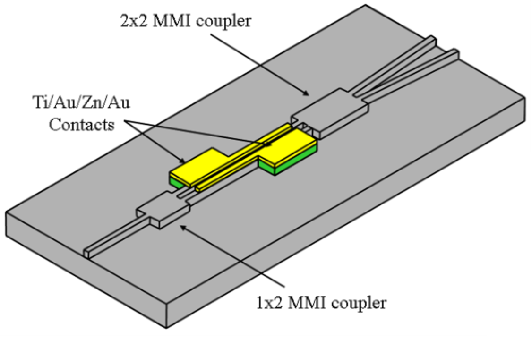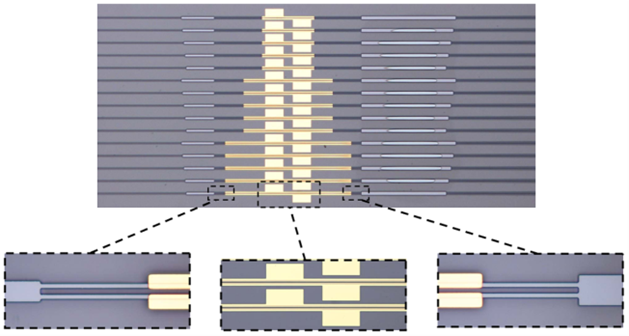Modulators
Optical modulators are essential components in advanced optical networks. In particular, modulation at a wavelength of 1.55 µm is critical, since minimum dispersion and absorption occur for silica fibers around this wavelength. For this reason, they have been fabricated on different material platforms. However, there is a remarkable interest on integrated technology because it provides highly robust products and costs are also decreased. In particular, InP-based compound semiconductors are very attractive because they are well suited for the monolithic integration of photonic and electronic devices. This is due mainly to two reasons. First, InP-based optical switches have the advantage of high-speed, low-power operation, and compact size because of the enhanced refractive index change obtained by using the quantum-confined Stark effect (QCSE) in multiple quantum wells (MQW). They are also well suited for operation at 1.55 mm, the wavelength at which minimum dispersion and absorption occurs for silica fibers. Additionally, they are the perfect candidates for high-speed electronic devices because of the high-carrier mobility and saturation velocity of electrons.



Integrated Mach-Zehnder modulator based on InGaAsP MQW.
Related Publications:
- 1. D. A. May-Arrioja, P. LiKamWa, I. Shubin, and P. K. L. Yu, "Integrated InGaAsP MQW Mach-Zehnder Modulator", Microelectronics Journal, vol. 39, pp. 660-663, 2008.
- 2. D. A. May-Arrioja, P. LiKamWa, R. J. Selvas-Aguilar, and J. J. Sanchez-Mondragon, "Ultra-compact Multimode Interference InGaAsP Multiple Quantum Well Modulator", Optical and Quantum Electronics, vol. 36, no. 15, pp. 1275-1281, December 2004.
